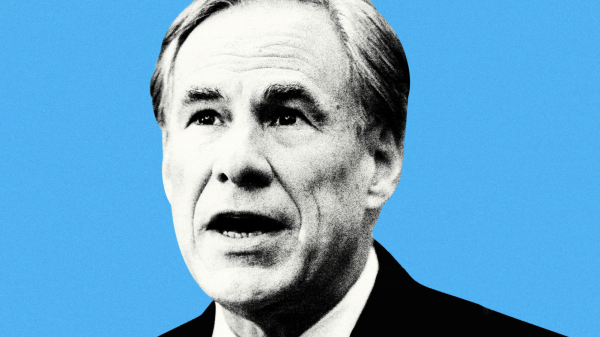The Polarizing American Healthcare System Faces Tremendous Changes in its Future
November 2, 2020
The issue of healthcare has seized the main stage of politics for a very long time. In the 2016 presidential election, both candidates fought furiously over the future of the American healthcare system. Similarly, the 2018 midterm elections saw healthcare as one of the most important issues to voters as well. Fast forward to 2020, the debate over healthcare is still raging. The recent presidential debate saw healthcare, specifically the Affordable Care Act, as a principal issue debated between the Republican candidate, Donald Trump, and the Democratic candidate, Joe Biden. But why is the current healthcare system so controversial?
On March 23, 2010, President Obama signed the Patient Protection and Affordable Care Act into law. Also known as simply the Affordable Care Act or “Obamacare”, the act had two main objectives: to reform insurance by providing better insurance to more Americans and to improve the way health care is delivered [1]. This article will be focused on the former objective.
The act’s first tactic in achieving the former objective involved expanding Medicaid to more people. Medicaid is a healthcare program that is funded jointly by states and the federal government, and it seeks to provide health coverage for low-income, disabled, or elderly Americans [2]. The Affordable Care Act, in order to increase eligibility for medicaid, required states to expand medicaid’s eligibility to 138% of the federal poverty level. This means that if a family had an income that was below 138% of the federal poverty level—the true monetary value varies based on the number of people in a household—they would be covered by medicaid. Before the ACA, states could set their own levels at which people would be covered. But in many cases, it was much harder to be eligible for Medicaid. Thus, the ACA established a nation-wide standard for the eligibility of Medicaid recipients and forced states to comply with the new standard. However, in National Federation of Independent Business v. Sebelius, the Supreme Court ruled that the states are not compelled to expand medicare—that is, they have the right to refuse the ACA’s standards [3]. As a result, some states did not choose to expand Medicaid, though a large portion still did, allowing more people to be covered.
Another way that the ACA sought to provide insurance to more people was through state-level exchanges. These were marketplaces in which individuals and small businesses could compare and buy insurance plans and receive premium subsidies if eligible (incomes between 100-400% of the national poverty level) [4]. In addition, the ACA also included the guaranteed issue provision, which promised available insurance options regardless of one’s health status. However, if only people with certain medical conditions, say for example people that have a history of heart problems, were in the insurance pools, the premium would be nearly unaffordable for anyone. Thus, the ACA also required the premium to be community-rated and implemented a limit on the lowest and highest premium within a pool [1]. But for a premium to be determined from a pool of people in a certain area, the people in the pool must buy the healthcare. If people without pre-existing conditions did not buy insurance and opted out, they would not be counted in the pool, forcing premiums to rise. Thus, the individual mandate provision of the ACA required all U.S. citizens and legal residents to have health insurance by implementing a tax penalty for individuals without coverage [4].
Once again, those changes above only represent a fraction of the tremendous changes the act brought to healthcare. But this act, which seemingly gives so many benefits, has been at the center of the political debate ever since its adoption in 2010, with both parties having sharply different views on its future. The ACA has several major issues. The first big issue is that by providing more people with healthcare, there will inevitably be higher demands for healthcare. In order to satisfy these demands, insurance companies must raise their premiums. Combine that with the natural aging population, population growth, and inflation, premiums are bound to rise. And it certainly did. The average annual premiums in 2018 rose 5% for family coverage and 3% for single coverage [17]. Thus, the ACA certainly did not achieve its goal of cutting costs. Furthermore, this rise in premiums has led to a second problem, though there are positives that came along with it.
The great thing about the ACA is that people with low incomes are shielded from these increases in premiums, mainly because they are eligible for federal subsidies and the subsidies rose with the premiums [16]. The problem, however, is that middle class families, especially those whose incomes are a little bit too high to be qualified for subsidies, have to take the full burden of the premium rises and will most likely struggle to pay for them. A good portion of people who benefit from the ACA are those who are newly eligible for Medicaid due to its expansion. But keep in mind, these beneficiaries have an income below 138% of the Federal Poverty Level. Working and middle class families with higher annual salaries did not receive much help at all.
With the election coming up, the future of the healthcare system under the ACA may be subjected to enormous changes. Here are the policies of each candidate.
In his 2016 campaign, Trump had called for the complete repeal of Obamacare. While this has not happened in his presidency, mostly due to the polarized Congress, he has taken measures to change and remove parts of the act. In December 2017, under the Tax Cuts and Jobs Act, the individual mandate provision of the ACA was effectively removed. The Trump administration also stopped providing cost-sharing reduction subsidies (CSR subsidies) to insurance companies. The purpose of these subsidies was to encourage insurers to stay in the ACA insurance exchanges and reduce premiums. Finally, the Trump administration allowed states to include work requirements for Medicaid. This simply meant that if states adopted the work requirements, then the beneficiaries of Medicaid must also prove that they have a job or go to school [5].
While some of these changes may seem like they will have severe negative impacts on the many less fortunate Americans in need of proper health coverage, the truth is much more complicated. For example, the ending of CSR subsidies may forewarn significantly higher premium prices, but it was circumvented by insurance companies, who increased the prices of their silver plans on the healthcare exchanges. Also known as “silver loading”, the pricing strategy increased the size of the premium tax credits, which in the end, helped eligible individuals and families cover their healthcare premiums [6]. In other words, the federal government still subsidized eligible individuals’ premiums, but just in a different way. Similarly, removal of the individual mandate has had a largely known effect. It is very likely that premiums for most individual market plans would increase and less people would have coverage, but the magnitude of these impacts, as well as other potential impacts such as the decrease in federal deficit, are still largely unknown due to how recent the removal of the provision had been [7].
But all those changes are in the past. The Trump administration has recently declared a new healthcare plan for American. While the details of the healthcare plan are yet to be delivered to the public, the Executive Order [8] that President Trump issued on September 24 highlights some of his goals for the future of the healthcare system. The first issue that the Executive Order addresses is protection for those with pre-existing conditions. Though the order does not specify how the administration will achieve that goal, it states that the Trump administration will have a “steadfast commitment to always protecting individuals with pre-existing conditions and ensuring they have access to the high-quality healthcare they deserve”. The Executive Order also addresses the issue of surprise medical bills, where the order states that the Secretary of Health and Human Services will work with the Congress to reach a legislative solution by December 31 of this year. If a legislation is not passed by then, the order allows the Secretary of Health and Human Services to take administrative action to prevent such bills. The order also fights for increased transparency with insurance plans, mandating that within 180 days of the order, the Hospital Compare website [9] must display whether a hospital follows the Hospital Price Transparency Final Rule (requiring hospitals to publicize their standard service charges [10]), provides patients with a receipt that includes a list of services they received during their stay, and how often a it pursues legal action against patients. Transparency is absolutely vital in healthcare. Knowing the prices and the services the hospital provides will prevent the hospital from overcharging their patients. It also allows purchasers of insurance plans to make the best decisions for themselves. The Executive Order also outlines other larger goals such as lowering medical costs through reduced drug pricing and giving individuals more freedom through the State Relief and Empowerment Waivers, which allow states to manage their own insurance market and move away from the “ACA’s rigid structure” [8].
Through these measures, Trump asserts that his new healthcare system will help more Americans. Though the act’s specifics are yet to be unveiled, its implementation would guarantee a complete repeal of the ACA.
On the other hand, the Democratic candidate Joe Biden and his administration have a much different plan for the future of the American healthcare system. From the campaign’s own website, Biden seeks to “build on the Affordable Care Act by giving Americans more choice, reducing health care costs, and making our health care system less complex to navigate” [11], particularly through the addition of a new public option. The public option is a federally funded healthcare plan that could be purchased with ACA subsidies. It would be available to those who lack insurance, those who purchase insurance through the state-level exchanges, and those with low income in states that have not expanded Medicaid. Since it is cheaper than many private insurance plans, Democrats hope it would drive competition and decrease prices of private insurance [12]. The controversy surrounding this option stems from private insurance companies’ fear of being put out of business due to low prices of the public option [13]. Furthermore, Biden stated that those with low income in the states without expanded Medicaid would receive premium free coverage. Some have argued that this policy would allow these states to pay less than the expanded states [14]. On the Biden campaign website, this is confirmed and outlined as such: “[s]tates that have already expanded Medicaid will have the choice of moving the expansion population to the premium-free public option as long as the states continue to pay their current share of the cost of covering those individuals” [11]. Another way Biden seeks to build on the ACA is by expanding current ACA premium subsidies. Currently, the subsidies are determined based on the cost of an insurance company’s silver plan with a 70% actuarial value. A 70% actuarial value means that 70% of the health costs would be paid by the insurer, who would be financed with premiums, and 30 percent would be paid directly by the purchaser through deductibles, copayments, etc. Biden proposes that the subsidies should be based on the gold plans with 80% actuarial value [12], which have higher premiums thus the subsidies would be higher as well [15]. Finally, Biden seeks to reduce the share of income that subsidized families have to pay for their insurance. He wishes to cap all American’s share of income at 8.5%, which is lower than the current cap of 9.8% for those with below 400% of the federal poverty level. For those above that threshold, there are actually no caps at all [12].
Of course, while some of Biden’s proposed changes sound exceptionally beneficial, the changes are merely proposals. They have not been put into law and thus, their potential impacts are yet to be determined. But one thing is certain, the ACA faces drastically different futures. Though the two candidates have similar goals, their method of achieving them is vastly different and the impacts of their plans are still yet to be seen. No matter what system of healthcare is adopted in the future, the importance of healthcare will never lessen. It affects the health and safety of every person in the country and it may save countless lives everyday.
[1]http://www.ihi.org/resources/Pages/AudioandVideo/Don-Berwick-ACA-AHCA.aspx
[2]https://www.hhs.gov/answers/medicare-and-medicaid/who-is-eligible-for-medicaid/index.html
[3]https://www.oyez.org/cases/2011/11-393
[4]http://files.kff.org/attachment/Summary-of-the-Affordable-Care-Act
[8]https://www.whitehouse.gov/presidential-actions/executive-order-america-first-healthcare-plan/
[9]https://www.medicare.gov/hospitalcompare/search.html
[11]https://joebiden.com/healthcare/#
[12]https://www.crfb.org/papers/understanding-joe-bidens-2020-health-care-plan
[13]https://www.verywellhealth.com/public-option-health-insurance-pros-and-cons-2615248
[15]https://www.bcbsm.com/index/health-insurance-help/faqs/topics/buying-insurance/metal-tiers.html
[17]https://www.ncsl.org/research/health/health-insurance-premiums.aspx





Shree Manivel '23 • Dec 2, 2020 at 3:13 pm
This is a very well-researched article, Raymond! I really appreciate how the statistics and your own analysis drawn from several healthcare policy-focused sources provide us with a broader picture of past precedent, the status quo, and the future of the American healthcare system. Nicely done!